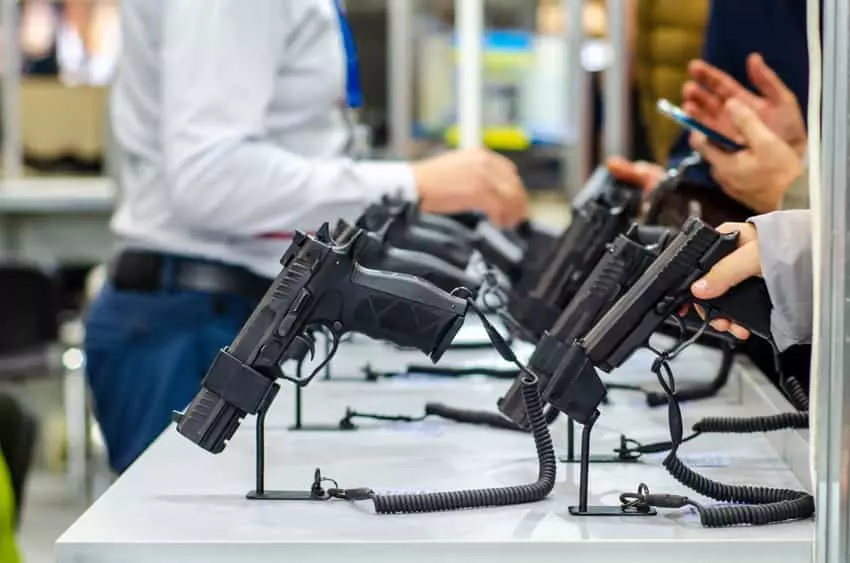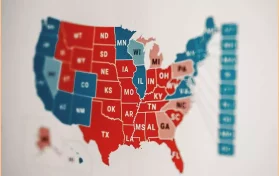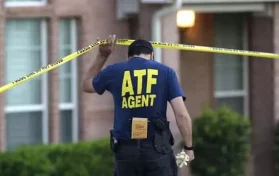
The Second Amendment reads: “A well regulated Militia, being necessary to the security of a free State, the right of the people to keep and bear Arms, shall not be infringed.”
This amendment is one of the most hotly contested of the Bill of Rights. On one hand, gun rights advocates point out “shall not be infringed,” and they believe that there should be no adjustments to the amendment. The Brady Bill, which enacted a waiting period for gun sales so that a background check could be carried out, was in place between 1994 and 1998. Today, while different states have different background check laws, most federally licensed gun dealers are required to run a background check. Yet, gun control advocates say this isn’t enough.
Take the case of Dylann Roof, the perpetrator in the Charleston, SC church shooting. Roof legally purchased the gun he used in the massacre, and the gun dealer carried out the background check. Roof had confessed to possession of marijuana just a month prior to the purchase, and, although this threw a flag on his background check, legally, Roof was allowed to purchase the gun because there was no denial returned within 72 hours of the initiation of the background check. By law, as long as there is no denial within three business days, then a person is granted the purchase via “default.” (NOTE: A bill was introduced in the House of Representatives that would have extended the waiting period, but it has not left the House.) While it is a shame that Roof was allowed to buy the gun, it’s important that Americans understand where current law failed to prevent Roof from being denied a gun. Of the 96 percent of guns legally purchased, the background check comes back within minutes. Roof’s situation was an anomaly, albeit a dangerous one.
In 2018, Politifact ran a fact check on then-Representative John Faso’s C-SPAN statement that “the vast majority of gun violence is committed by people who are illegally possessing that firearm.” The site deemed the statement “mostly true,” citing a study which surveyed inmates convicted of a gun crime.
Interestingly enough, in states where gun control laws are fairly strict, such as New York, sixty percent of inmates shared that they “illegally procured” the gun used in the incident.
Dr. Daniel Webster is a director of Gun Policy and Research at Johns Hopkins, and he stated that “In the 13 states with the fewest restrictions on gun ownership, forty percent of inmates illegally obtained the gun they used. Only thirteen percent purchased the gun in question from a store or pawn shop.”
Forty percent of inmates surveyed by Webster said they got their gun from the black market or a drug dealer; some said they stole the weapon.
By the end of 2021, five million more Americans had become legal gun owners. Sales of ammunition also skyrocketed, so much so that people had trouble finding it locally. Most individuals procured a firearm for personal protection. However, one can’t discount the uptick in violence that also occurred during the pandemic, with 2021 crime statistics reaching rates unseen since the mid-1990s.
Is the uptick in gun sales related to the increased violence in America? Overwhelmingly, no.
First, statistics from federal background checks show that gun sales – at least those in which a federal background check was required – decreased in 2021 when compared to the early days of the pandemic (March 2020 – December 2020). Even researchers with the Violence Prevention Research Program at UC-Davis found that there isn’t an exact correlation. This is particularly important when one considers that many of the people buying guns during the pandemic were first-time purchasers, and one can’t have a felony, a domestic violence misdemeanor, or “be intoxicated” when purchasing a firearm legally.
The Biden Administration has pointed to “ghost guns” as a potential source of the problem. A ghost gun is a term that describes an unfinished firearm that cannot be made to fire without addition fabrication. There is also discussion of guns made using a 3D printer. While the unfinished firearm can be assembled by virtually anyone with a bit of mechanical know-how, accuracy can be a problem. For the 3D gun, accuracy is a huge problem, and they tend to fall apart after just a few uses. Ghost guns have only been attributed to a relatively small number of crimes. Only 24,000 ghost guns were recovered by law enforcement agencies between 2016 and 2021; when one considered the ATF data shows they traced and recovered a total of 250,000 – 350,000 firearms in 2019, that number of ghost guns is fairly small.
What is the answer to gun crime? When statistics show that most states with lax gun laws have statistically lower gun violence, one might conclude that legal gun ownership is a good deterrent. However, gun control advocates recommend more control. We simply can’t legislate away the event in human hearts, but the law gives us the ability to protect ourselves.
Choose wisely.





